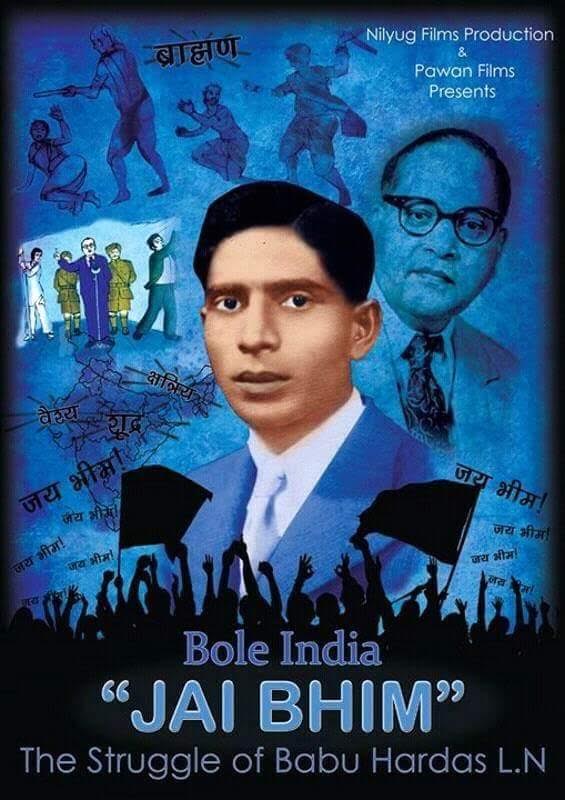Manish Gautam
As the old adage goes, cinema is the mirror of society, but one can delve much deeper into this question: does cinema merely reflect what is visible (or not visible) in society or does it extend far and wide and deeper into that parallel world consisting of the people who are writing scripts and plots, penning songs, conjuring dialogues between the actors, giving the words a visual, and the visuals, words? The people who are creating this cinema are not from some Martian civilisation who are just observers of earthlings, but actually do come from and are tightly tied up with the society that they are showing on the silver screen. Therefore, there is a fair chance that as the outer society (the audience) has hierarchies, divisions, biases and prejudices, the people of the mirror-world, i.e. Cinema, have the same biases, prejudices and hierarchies that they hold dear to their existence and want to perpetuate further owing to their allegiance to the social group they are born into. Bollywood is such an example of this mirror-world: the society that it consists of is prominently upper caste and it perpetuates casteism in myriad ways, within their own world and through projecting outward to society, the consumers of this cinema.
One might question how does cinema perpetuate casteism? They might say that this claim is just hollow, without any substance. Casteism or the Caste System is a pervasive feature of Indian Society from the antediluvian times and it is not going to go away any sooner until the groups oppressed by this system start a crusade against the material and cultural hegemony of upper castes. Caste identity is not a perceived or a new-age invented identity stemming from the modern ideas of struggle for equality, or the fight against the unequal distribution of resources and wealth; but has its roots in the Hindus’ ‘way of life’ – to always stick oneself onto the caste ladder and establish the relative location from other castes in that ladder. So, let me pose and try to answer another question:
How does one encounter and manifest caste, and if this manifestation of caste is an inherent feature of Casteism? By having the notion, firstly, and the additional baggage (a history of privileges if one happens to be from the higher castes, and a history of oppressions if one happens to be from the lower castes) of one’s own caste association and of other’s caste association (readily signified from their caste names).
The other spaces (both physical and mental) and media where ‘caste’ interactions are often loaded with, and manifest the same hierarchy – the perceived (i.e. the notion of one’s superiority or inferiority stemming from and because of their caste association) or actual (i.e. apparent privileges and hegemonic structures of upper castes people; and biases, prejudices and discrimination faced by lower castes groups) difference between people from different castes.
Therefore, we see that caste cannot, and does not, function in a singular form; it should at least have one counterpart, another caste location in the hierarchy where one can establish oneself as superior or inferior to the person of the other caste.
One of the manifestation of this attitude, of establishing oneself in the caste hierarchy, is by demeaning one caste group (towards the person who happens to belong to the lower stratum of the caste hierarchy system) based on its characteristics (perceived or actual, with a lot of subjectivity and biases involved in all the cases) and creating racial slurs about them, and by pointing out and proving one’s worth and eulogizing one’s own caste association/group.
Many lower caste names are still in vogue as abuse, slurs and slang among the Indian population, even in the urban settings, percolating to all classes and so-called educated groups of the society. At the same time, the upper castes have largely occupied the cultural spaces, imagining themselves as uncorrupted, indelible attitudes of the larger populace, and if their status, their spaces are threatened by any internal friction (afterall the upper castes contain a plethora of castes which want to place themselves on the higher side of the caste ladder), they start describing the characteristics of their caste groups and how noble they are, and any deviation perceived from others is just an error on their side: an upper caste person cannot be a criminal, a thug, a miscreant or any other noun that can describe any non-acceptable behaviour.
~~
In 2007, the country’s famous actress Madhuri Dixit Nene made a comeback after a long hiatus with the movie Aaja Nachle, the movie’s release saw a ban in few places in India. The controversy surrounded the lyrics of a song having casteist remarks. Let’s see what the lines of the song in question say:
“Mohalle me kaisi maara-maar hai,
bole mochi bhi khud ko sunar hai.”
“There is chaos in the neighborhood;
even the Mochi (Cobbler) calls himself a Sunar (Goldsmith)”
This translation is given in the wikipedia page of this movie. The wiki page [1] also mentions that “dalit groups said the line implied that Mochis (the Jatav caste – a caste of cobblers) were inferior to Sunars (goldsmiths).” Doesn’t this objection (the quoted lines) sound half-baked? It is common knowledge, at least in northern part of the country, where are the Mochi caste and Sunar caste located on the caste ladder. The problem with the lines is this: if one reads this line carefully, one would read it as “there is chaos in the neighborhood, because the Mochi is calling himself a Sunar”. The mochi caste has traditionally been an untouchable caste and thus comes under Schedule Caste, whereas Sunar is an artisan caste and perhaps locate itself into the OBC in the constitutional framework of the Indian society. The lyricist, Pankaj Mishra, is actually reminding all of us that a person from a mochi caste is trying to climb up the caste ladder by claiming himself a sunar and this has caused the chaos (remember the huge penalty that the people of dalit castes, since the advent of Manudharma, have had to pay in form of extreme violence if they try to shun their caste status and try to seek upper mobility in the society)![2]
~~
An agitated Manju knocks the Royal Queen’s room in the middle of a night to seek an audience with her over the matter of the love affair between Milli (Manju’s daughter) and the Prince[3]. When the queen, character played by Ratna Pathak Shah, shuts the door on Manju, Manju (played by Kirron Kher) curses the royalty as ‘Royal Kanjarkhana’. Kanjarkhana would translate into ‘a houseful of Kanjar people’. Kanjar community is a nomadic tribe (and have a social status similar to an untouchable caste) that once was tagged as a ‘criminal tribe’ by the Britishers in Indian Subcontinent. The Kanjar people still face the social stigma, prejudices and discrimination [4]. Manju uses the word Kanjar as a slur pointing out the nature of the royal family that keep fighting with each other (as the people of Kanjar tribe are perceived as the quarrelling people). Later in the movie Manju asserts that her daughter is worthy of being a bride to the prince as she is also a rajpoot as the royal family. Notice the juxtaposing of assertion of Rajput Caste identity of Milli (who is an offspring of an intercaste marriage between Bengali brahmin, Pratik Charkarvarti and a Punjabi Rajput, Manju) to the undignified, slurred evocation of Kanjar tribe! The movie Khoobsurat, not only eulogizes upper castes groups but also demeans, abuses others in the lower stratum of the caste system.
Hindi Cinema is replete with such examples: From janeu brandishing Chulbul Pandey[5] stopping crime in Kanpur city, to the Delhi boy Vicky being convinced by Doctor Baldev Chaddha to donate his sperm as he belongs to the ‘Aryan race'[6]. As Arvind Shesh brilliantly analyses Anurag Kashyap’s movie Gangs of Wasseypur and points out “when the two gang leaders were ‘Khans’, how was one leader suddenly transformed into an Ehsan or Sultan Qureshi?… From the beginning till the end, the characterization of Khans and Qureshis might prove useful to condition the viewers, but to understand the politics behind this does not require much effort. Among Indian Muslims, the Khans i.e., the pathans, are considered savarnas and the Qureshis are pasmanda”[7]. Who knows why Manu Sharma could not marry Datto because they belong to two different castes (Manu Sharma being a brahmin, Datto being a Jat!) in the movie Tanu Weds Manu-Part 2 (interestingly the love triangle in the first part of the movie is between an Awasthi, a Sharma and a Trivedi!)[8]?
Hindi Cinema, as I have already mentioned, is both the producer and product of such caste society. It reproduces an upper caste perspective and tirelessly tries to legitimise the material and cultural hegemony of upper caste groups. Lastly, I would end it by recounting Arvind’s words of watching a ‘film as a society, and society as politics’.
Notes and References
1. https://en.wikipedia.org/wiki/Aaja_Nachle#Controversy
2. On a google search on this controversy, I came across this blog where the blog author has made similar observations: http://hindu-society.blogspot.in/2008/02/aaja-nachle-caste-controvrsy.html
3. https://en.wikipedia.org/wiki/Khoobsurat_(2014_film)
4. http://www.hindustantimes.com/india/madhya-pradesh-tribe-still-shackled-to-british-era-criminal-tag/story-QZa4GFsdMZwL2GXYpL9MgI.html
5. https://en.wikipedia.org/wiki/Dabangg
6. https://en.wikipedia.org/wiki/Vicky_Donor
7. http://roundtableindia.co.in/index.php?option=com_content&view=article&id=8309:gangs-of-wasseypur-not-a-film-but-the-politics-of-feudal-mind-sets-2&catid=119:feature&Itemid=132
8. https://en.wikipedia.org/wiki/Tanu_Weds_Manu:_Returns
~~~
Manish Gautam is currently working as a project assistant at the Indian Institute of Science, Bangalore and he likes to read and write on caste, queer issues, environment and climate change.









